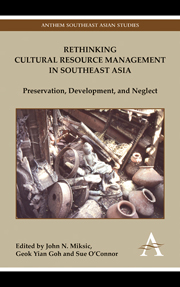Book contents
Chapter 12 - Transforming the National Museum of Singapore
from Singapore
Published online by Cambridge University Press: 05 May 2012
Summary
Among the colonial institutions that Singapore inherited with independence on 9 August 1965 was the Raffl es Museum, established in 1849. It moved to its present building with its iconic dome (now a gazetted historic building) in 1887 and became a repository of colonial knowledge of the natural history, ethnography and archaeology of the Malay world especially the peninsula. But the People's Action Party government had other more pressing priorities for Singapore's economic, political and security survival in 1965 than deciding on the future of an old colonial museum. It was only in 1984, with Singapore's survival assured, that the government started to refl ect with confidence on Singapore's past in a major exhibition on 25 years of nationhood since 1959. Concurrently, the old Raffl es Museum, now renamed the National Museum, started installing a new series of exhibits tracing Singapore's journey to nationhood.
A Long-Term Vision for the Museum
In December 1986, then minister for community development Mr Wong Kan Seng appointed a task force to draw up long-term plans for the development of the museum. This task force was chaired by Mr Tay Kheng Soon, a pioneering architect deeply concerned with Singapore's urban heritage and history. The task force's primary recommendation was that the museum should make a radical break from its traditional image of being a treasure house full of butterflies, stuffed animals and strange smells, and especially the whale skeleton hanging from the ceiling.
- Type
- Chapter
- Information
- Rethinking Cultural Resource Management in Southeast AsiaPreservation, Development, and Neglect, pp. 201 - 216Publisher: Anthem PressPrint publication year: 2011

